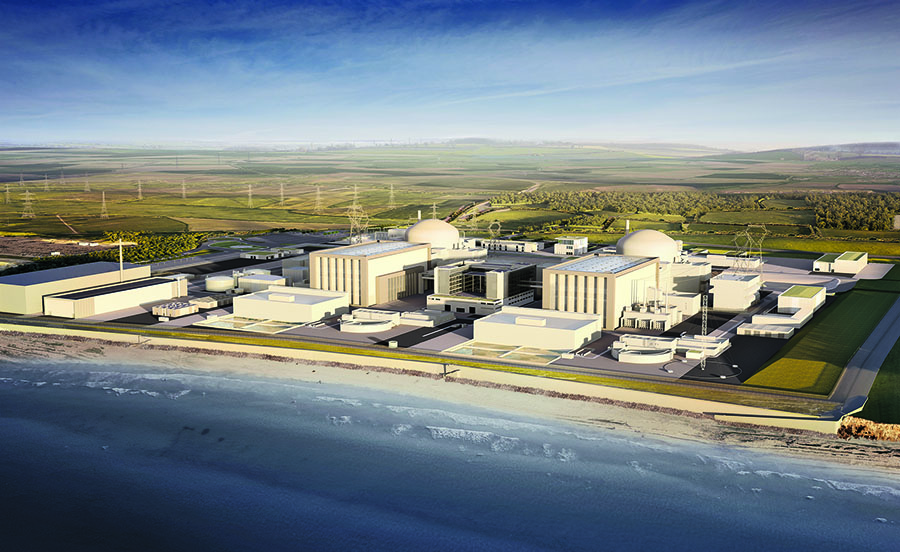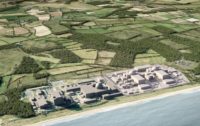The U.K.’s 3,600-MW Hinkley Point C nuclear power plant project was launched as a privately-financed venture, but its future now hangs on a French government decision due in May.
The project developer, French state-controlled EDF Energy, has already invested $3.5 billion in the project and is spending $80 million per month at the site in Somerset, England, according to CEO Vincent de Rivaz.
With permits in place and contractors lined up, EDF is ready to go. But to carry the $26 billion piece of construction on its dwindling balance sheet, the company must secure backing from its 85% shareholder, the French government.
EDF remains officially confident, but internal dissent has surfaced raising doubts.
In March, EDF's group chief financial officer Thomas Piquemal quit, warning that the huge Hinkley Point C investment could destabilize the utility's finances.
Hinkley Point C represents 15% of EDF’s total investment needs, at a time when revenue has fallen with the global drop in energy prices, CEO Rivaz recently told a committee of U.K. lawmakers.
Additionally, an internal letter from senior EDF engineers that was leaked to the Financial Times newspaper, urges the company to delay the facility’s planned completion from 2025 to 2027 because of the complexity and novelty of itss French-designed EPR pressurized water reactor.
Hinkley Point C is planned to be the first of a new nuclear fleet announced by the U.K. government a decade ago. EDF acquired several existing sites and went on to secure approval for a new generating plant at the Hinkley Point site based on the EPR design, developed by France’s AREVA NP.
In a deal last October, EDF agreed to transfer 33.5% of its 100% ownership of the Hinkley Point C plant to its long-standing partner, Beijing-based China General Nuclear Corp.
The Chinese firm also secured a potential minority interest in EDF’s future Sizewell C EPR plant, in Suffolk, and it could gain a controlling interested in the proposed Bradwell B plant in Essex.
For Bradwell, Chine General Nuclear wants to use a Chinese-designed HPR1000 reactor, says Zhu Minhong the company’s general manager for international nuclear business development.
With the EDF team taking the construction risk, the U.K. government made the deal more bankable with an offer to the builder to guarantee 65% of the required debt. It also agreed to a minimum electricity price from the plant of $133 per MWh at 2012 values for the first 35 years of operation.
In today’s market, that would amount to a $2-billion annual subsidy to EDF, according to Peter Atherton, a London-based managing director of the investment bank Jefferies International. The deal “offers extremely poor value for money…and very high risk for the U.K. consumer and taxpayer,” he told the lawmakers.
In addition to EDF’s ability to finance the project, the EPR’s poor track record has raised concerns. The world’s first EPR plant started construction in Finland over a decade ago. It is now more than six years late and subject to an arbitration claim by the construction consortium for $4 billion in additional payment.
The consortium of AREVA and Germany’s Siemens A.G. cite additional work, disruption and delays for the price hike on the turnkey contract for the Olkiluoto 3 plant, signed in 2003.
But plant owner Teollisuuden Voima Oy, Helsinki, is sticking to the $3.4-billion contract value and has lodged a counterclaim for $3 billion.
In France, the second EPR plant at Flamanville is also about six years late. Now scheduled for completion in 2018, the projected final $12-billion cost is more than three times the original budget.
Two EPRs closest to completion are at China’s Taishan plant in Chixizhen, Guangdong province. “We hope that the first unit of EPR will come into production…next year,” says Zhu. Construction of the two 1,750-MW reactor plants started in October 2009.
“Taishan has been able to benefit from learning out of the experience on Flamanville,” says Humphrey Cadoux-Hudson, EDF Energy managing director for new nuclear projects.
As well as gaining from earlier projects, Hinkley Point C is the most intensively planned, he adds. “I would say that none of the other projects have been anything like as well-prepared.”





Post a comment to this article
Report Abusive Comment